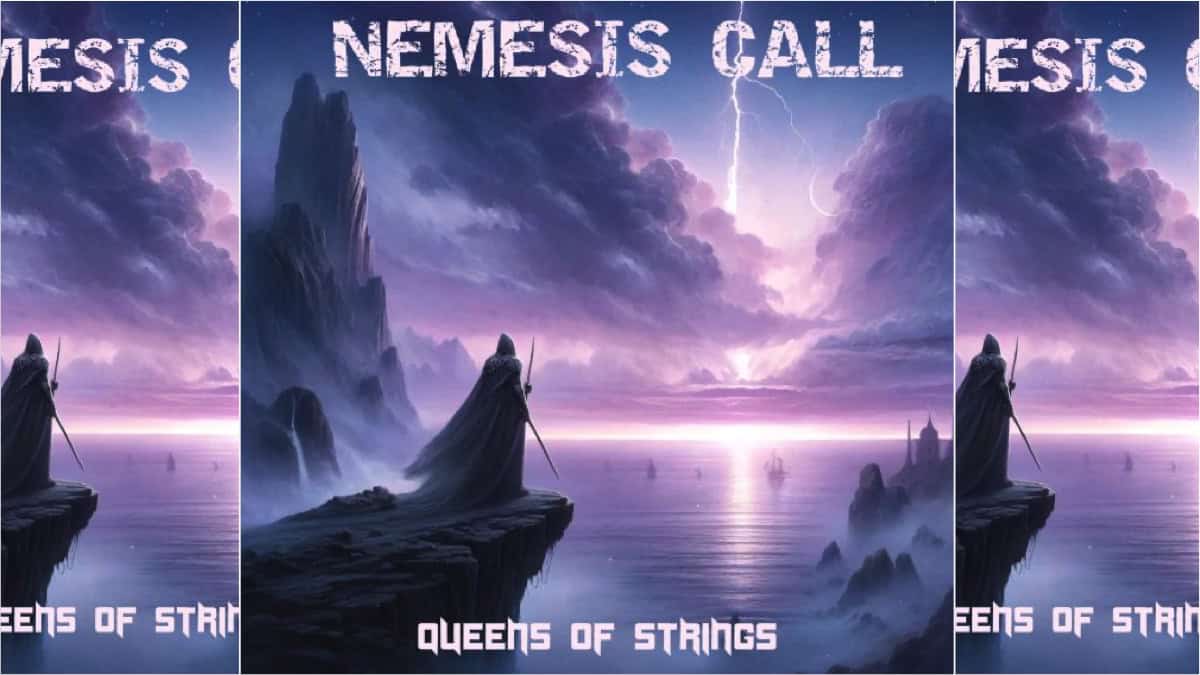Latest
Jimmy Garrison’s Bass line from Crescent

 This month’s transcription is the final half of Jimmy Garrison’s Bass line from “Crescent”, off John Coltrane’s album Crescent. It starts at 4:21 as noted at the top of page one. As always, we’ll be comparing everything to the major scale by the numbers. If you are already familiar with this analysis technique, then go ahead and skip to the next paragraph. If this is new or you need a refresher, then read on.
This month’s transcription is the final half of Jimmy Garrison’s Bass line from “Crescent”, off John Coltrane’s album Crescent. It starts at 4:21 as noted at the top of page one. As always, we’ll be comparing everything to the major scale by the numbers. If you are already familiar with this analysis technique, then go ahead and skip to the next paragraph. If this is new or you need a refresher, then read on.
First, as always, the notes in each line need to be compared with the major scale of the chord for each measure. We can then take our measurements and apply the idea to literally any situation. Let’s take the lick in measure 92 to explain this process.
Click to Download Crescent – Coltrane
The chord is some type of Eb chord, in this case, Eb minor seven. Take the Eb MAJOR scale and assign a number to each note. Start with one, and increase by one until you have labeled the last note (high Eb) as eight. One, two, three, four, five, six, seven, and eight, a number for every scale note. Now take the notes in the measure you are analyzing (meas 92): Eb, F, D, and Bb, and compare them to the major scale by the numbers. This example gives you 1, 2, 7, and 5. This is your lick. Now in order to apply this lick to all types of chords, you need to know your chord tones. A minor seven type of chord has the chord tones 1, b3, 5, and b7 when compared to its major scale (our ruler). The lick that we are looking at is 1, 2, 7, 5. Take this generic pattern and apply it to any chord. You need to know the chord tones for each chord in order to do this. For instance, over a major seven type of chord, this lick will be unchanged. 1, 2, 7, 5 on a G maj 7 chord gives us G, A, F#, D. Using the lick on a half diminished chord, aka minor 7 flat five, will give you 1, 2, b7, b5. We’ll not get into chord scales here. So if you know that a half diminished chord has the chord tones 1, b3, b5, b7, then you adjust your lick (1, 2, 7, 5) to fit, which gave us 1, 2, b7, b5. If you were using the lick on an “A half diminished” chord, aka A-7 b5, you would play A, B, G, Eb. If this discussion is a bit much to handle, try reading only one paragraph a day.
OK, so if you are reading this paragraph, you are feeling comfortable using the major scale as a ruler to apply ideas more universally. In this analysis, we will touch on some common walking licks and ideas that were used, some “fancy” licks that were played, some thoughts about walking over sus chords, and about chords that are more than one measure long.
As mentioned last month, you will notice that the walking line: 1, 2, 3, 1 happens frequently, sometimes appearing with variations. As you are playing through this transcription, you should be comparing every note to the major scale of the chord it happens “under”. You should perform this analysis at least once through the entire transcription, taking your time to understand what you are looking at. It’s perfectly fine to disregard reading at tempo. When you analyze, feel free to pause and really think about what you are playing.
Next I want to very briefly draw your attention to the triplet figure on beat three of measure 94. This rhythmic figure can often be ignored in most walking lines. It’s a useful tool that should not be forgotten.
Next let’s briefly talk about playing chromatic notes that lead into chord tones. Many of us are used to playing these on beat four of the measure, to lead into beat one of the next measure. But not as many are comfortable applying them to lead into beat three of a measure. Check out beat two of measure 128. Yep, that natural sign is correct. Those two D’s are acting as a lead in tone back to the root of Eb minor.
Now it’s time for the “fancy” licks. These are lines that should be used almost as a garnish as opposed to your tried and true foundation walking licks (like 1,2,3,1). Check out beats three and four of measure 101. Analyze this against the Bb major scale and you will see that it’s just chord tones from Bb7. It’s a really nice lick though, and since it is only chord tones, you can apply it freely and without fear to any chord, assuming of course that you adjust the lick for the chord tones in question. Next lick is measure 107. I really like it when a lick jumps up to the 9 (same note as 2) and then resolves back to the root on the next note. 9’s are pretty safe as well. The only time where a natural 9 would be totally wrong, is if the chord says specifically b9.
Now let’s talk about “sus” chords. Should we constantly avoid the thirds of the chord in a walking line? Take a look at the transcription. By analyzing the walking line, it’s clear that Jimmy is treating all the G7sus4b9’s as just G7b9’s, not “sus” chords. He plays a major third (the note B) on most of the places where this chord occurs. Upon further analysis, it’s clear that he is considering all the Bb7sus chords as actual “sus” chords, meaning that the four (of the Bb major scale) takes the place of any third (either D or Db). When you look at the measures where a Bb7sus happens, in most cases, he plays everything except the third. It’s really important to analyze these measures to get some ideas on how to walk over a “sus” chord without playing any type of third. There are places where he does play a third, but if you analyze each case (of Bb7sus), you will see that this is the exception rather than the rule. Now here’s something to chew on: what’s the difference between a G7sus4 and a Dmin7? Not much at all. Without getting too much into a subject that could take a whole article to cover, let me just say that the most important part of each chord is the third and seventh. In a dominant sus, one of the most important tones is missing, the third. So a Dominant sus4 is actually a blend of the 2 and 5 chords (like D-7, G7). Why am I mentioning this? Because if you see two measures on a sus chord that then moves to a chord up a fourth (like Bb7sus to Eb-), you can actually walk a 2-5 to the Eb. You could “superimpose” a measure of F-7, then a measure of Bb7 instead of two measures on Bb7sus. Make sure to adjust the 2-5 combination to either major or minor, depending on the 1 chord to end up on. Or you could just ignore it and not adjust, it’s jazz right? If this is confusing, don’t worry. Just forget it and read on. It’ll make sense later in your jazz studies.
The last item on our agenda is to discus a few ideas for walking over a chord that lasts for more than one measure. This can turn into a problem if you are called to play on a tune that has four or more measures all on a single chord. If you aren’t prepared with some tricks for these situations, a walking line can quickly become stale. One approach is to target chord tones on the down beats of following measures instead of roots. For instance, as in the example of this piece, there are many instances where a chord lasts for two measures. Instead of meandering in a scale, you can plan to target a chord tone on the down beat of the next measure, and construct a walking line that leads into your target. This will give your lines the feeling of having direction and motion in the midst of static harmony. One further trick to ensure that your lines have the feeling of momentum is to introduce chromatic tones that will lead into your targets. If your line is ascending, play a note that is a half step below the target directly before landing on the target. Practice this idea of chromatics leading into target chord tones over a song like “So What”, which has long stretches of measures over a single chord.
Want to take this idea a step further and get totally crazy? I’m not going to take a ton of time to explain this, because this article is already pretty long. Take a Gmaj9 and take away the root. What chord do you have? B-7. This works for every chord. Every chord has a 9th tone that will work on it. Memorize what type of chord is found on the third of each chord. Maj9 = Min7 from its third, Min9 = Maj7 from its third, dom b9 = dim7, dom9 = half diminished 7, half dim = min7. Ok, you have two measures on a D-9. Walk D-7 for the first measure, and walk Fmaj7 on the second measure. They’re both just notes from D-9, but now you’ve introduced a subtly different flavor. If you have four measures on Amaj7 (Amaj9), try a measure on Amaj7, then one on C#-7 and keep alternating. Very cool, but not easy at all.
That’s it for this month. Hope you enjoyed the rest of this great performance. Next time we’ll look at some funk lines.
Gear News
New Gear: Spector Doug Wimbish USA Custom Series Basses

Spector offers Doug Wimbish USA Custom Series basses…
Spector, a leading authority in bass guitar design, unveils two new Doug Wimbish USA Custom Series basses. Synonymous with bass excellence since 1987, Wimbish collaborated with Spector’s USA Custom Shop to create the DW-4 and DW-5 models, echoing the iconic instruments that have been favored heavily throughout his recording and performing career.
These signature basses faithfully replicate Wimbish’s originals, down to the smallest details like neck contours and nut widths. Customized EMG pickups, developed in collaboration with Wimbish, capture the distinctive sound that has shaped his monumental musical impact. These models invite players to explore the feel and response that have defined Wimbish’s signature style over the years.
Available in 4-string and 5-string versions, each model boasts unique features & finish options. The DW-4 comes in Amber Stain Gloss and Black Stain Gloss options, while the DW-5 offers Dark Blue Stain Gloss and Faded Natural Gloss. Every purchase includes a certificate of authenticity signed by Doug Wimbish. Wimbish comments, “Spector took the time to get every little nuance right, and that to me is dedication and being thoughtful enough to know ‘I want to nail it,’ and they did. I’m able to pick these instruments up for the first time and play them like I’ve already had them for years.”
For more information, visit spectorbass.com/doug-wimbish-usa-signature-series/.
Photo: Doug Wimbish, pictured with the new Spector Doug Wimbish USA Custom Series basses
Bass CDs
New Campaign: Alberto Rigoni, Nemesis Call – Queens Of Strings

Italian bass master and composer ALBERTO RIGONI is thrilled to announce his brand new project “Nemesis Call – Queens Of Strings”.
Nemesis Call – Queens Of Strings features a super talented drummer from Japan (TBA) and tons of female guitarists such as SAKI, Giusy Busetto, Alexandra Zerner (TBC) and many many others (TBA). Furthermore, Alberto has also launched a Fundraising Campaign for the project. 20% of the income will be donated to Lega del Filo d’Oro legadelfilodoro.it/it, an Italian association that helps deaf and blind children!
Alberto shares:
“Hello friends and music lovers! I’m Alberto Rigoni, an Italian composer and.. a BASS GUY! Between 2008 and 2024 I released 13 solo albums, spanning from progressive, rock, ambient to funky and experimental music, which also features contributions from musicians such as keyboard wizard Jordan Rudess (Dream Theater) drummer Gavin Harrison (Porcupine Tree) and Marco Minnemann (the Aristocrats), keyboardist Kevin Moore (ex Dream Theater), singer John Jeff Soto (ex Goran Edman (ex Y. Malmsteen), bassists Nathan East, Stu Hamm (Joe Satriani), Nik West (ex Prince) and many others. I’m also bass player for BAD As, Sunset Groove Society, Kim Bingham, The Italians bands and co-producer of Mistheria’s Vivaldi Metal Project.”
Alberto on the new project Nemesis Call:
“Even if my latest album “Unexpected Lullabies”, dedicated to my newborn Vittoria Parini Rigoni, will be released on June 4th, 2024, when Vittoria came to life I felt the need to compose new music (yes, I really can’t stop!!!!!). This time will be quite challenging because I’m willing to release an instrumental ambient/prog/rock/metal album, that will feature a talented and young drummer (TBA) and tons of female guitarists (that’s why I will call the album “Queens of the Strings”) such as Alexandra Zerner, YOKA and many others (TBA/TBC)). It won’t be easy to manage all such great musicians but I will make it!! Are you ready to face a new prog experience? The album will be released in Digipack CD and in high-quality digital format approximately at the beginning of 2025.”
The Fundraising Campaign:
As an independent artist, Alberto is looking for supporters who can help him reach the budget for the production (recordings, mix, mastering, artwork etc.) of this new album and has started this fundraising campaign that will end successfully on October 15th, 2024.
Get further information about Alberto Rigoni’s new project Nemesis Call Fundraising campaign at albertorigoni.net/nemesiscal
Bass Videos
Artist Update With Bassist Derek Frank

Bassist Derek Frank…
Many of you will remember the last time I chatted with Derek Frank was back in 2017. The main thing that impressed me was how busy Derek was and how he juggled playing with many huge acts.
Now, I am happy to hear that Derek launched a new album last March titled “Origin Story” where he digs deep into his roots and pays homage to Pittsburg.
Join me as we get caught up after all these years and hear the details about the new album, how Derek gets his sound, and his plans for the future.
Photo, Stephen Bradley
Featured Videos:
Visit Online:
www.derekfrank.com
www.instagram.com/derekfrankbass
www.youtube.com/derekfrankbass
www.facebook.com/derekfrankbass
Latest
This Week’s Top 10 Basses on Instagram

Check out our top 10 favorite basses on Instagram this week…
Click to follow Bass Musician on Instagram @bassmusicianmag
FEATURED @foderaguitars @bqwbassguitar @lecomptebass @xvector_basses @vuorensaku_guitars @phdbassguitars @meridian_guitars @sterlingbymusicman @ramabass.ok @overwaterbasses
Gear News
New Gear: Alberto Rigoni Signature Bass, the VPR5 by Gaetano Costanzo!

Alberto Rigoni Signature Bass, the VPR5 by Gaetano Costanzo!
Internationally renowned bassist ALBERTO RIGONI (soloist, BAD AS, Vivaldi Metal Project, TwinSpirits, etc.) is proud to announce the release of his signature bass VPR5 made by renowned Italian luthier Gaetano Costanzo!
The bass is entirely handmade in Italy, without the use of CNC or other machinery, and has rather special features. The VPR is a 5-string bass (but also available as a 4-string) with 30 frets, Seymour Duncan pickups, Music Man Alnico style, passive electronics (volume, tone and a switch to select series/parallel/single-coil mode), alder body, and American maple neck and fingerboard. Gotoh tuners that ensure perfect intonation. The bass is totally painted white (nitro finish) but other colors can be requested. The VPR has a weight of about 2.9 kg and suitable for any genre.
For more information contact Gaetanobass77@gmail.com or visit online at www.instagram.com/gaetanocostanzoluthier or www.facebook.com/GaetanoCostanzoLuthier











